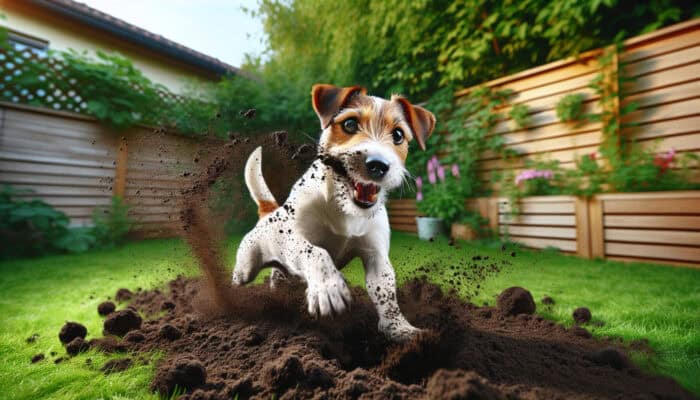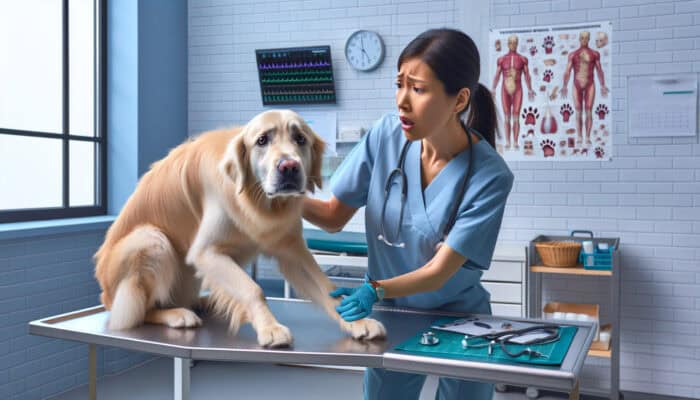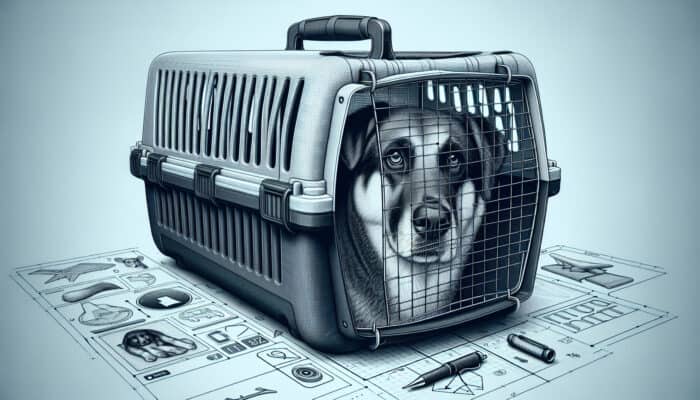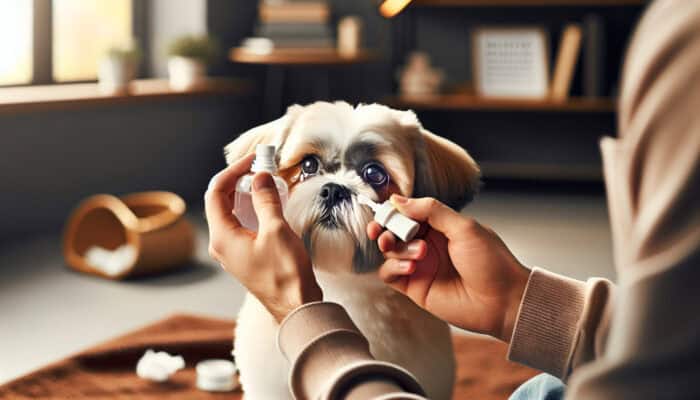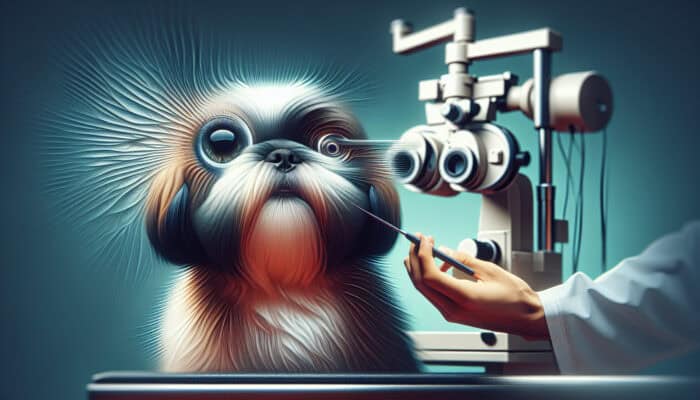Essential Steps to Take Immediately After Your Pet is Involved in a Car Accident
Conducting a Comprehensive Health Evaluation of Your Pet
Following a car accident involving your beloved pet, your foremost duty is to conduct a comprehensive health evaluation of their condition. Begin by observing for any visible signs of injury, such as bleeding, labored breathing, or unconsciousness. This preliminary assessment is crucial as it helps you determine the urgency of the situation and the necessary subsequent actions. If your pet seems to be in distress, it is essential to remain calm and avoid moving them unless they are in immediate danger, such as being in the path of oncoming traffic. This precautionary measure is vital to prevent exacerbating any injuries they may have sustained.
In addition to checking for obvious injuries like cuts, swelling, or broken bones, closely monitor their behavior. If your pet is whimpering or showing signs of discomfort, this indicates the urgency for immediate medical attention. In the unfortunate event that your pet is unresponsive, checking for vital signs such as breathing and a heartbeat becomes imperative. If they are not breathing, be prepared to perform CPR, provided you have received the appropriate training. Prioritizing your pet’s safety and comfort during this critical assessment is absolutely essential.
Ensuring Safety at the Scene of the Accident
Securing safety at the scene of a pet car accident is of utmost importance. Begin by activating your hazard lights to alert other drivers of the situation, and if possible, don reflective gear to enhance visibility. This protective measure not only safeguards your well-being but also ensures the safety of your pet and other individuals on the road. If feasible, move your vehicle to a safe location away from traffic to minimize the risk of further accidents. In scenarios with heavy traffic, it might be safer to keep your pet inside the vehicle until help arrives, particularly if they seem to be seriously injured.
Establishing a secure area to care for your pet is paramount. If your pet is agitated, they might inadvertently cause harm to themselves or others. Use a leash or harness to restrain them if they are conscious. Ensure that bystanders or other motorists maintain a safe distance while you evaluate your pet’s condition. Remember, maintaining a calm and focused demeanor during such stressful circumstances can significantly influence the outcome for your cherished companion.
The Importance of Contacting Emergency Services Promptly
Contacting emergency services is an indispensable action following a pet car accident. Immediately call for veterinary assistance; timely care can dramatically enhance your pet’s chances of recovery. When making the call, provide precise details about your location and describe your pet’s condition as accurately as possible, including any visible injuries and notable changes in behavior.
In numerous regions, dedicated emergency veterinary services operate 24/7, and being aware of how to reach them can save crucial time. It’s advisable to save the contact information of local animal hospitals in your phone for quick access. Being prepared in advance can significantly alleviate panic during emergencies, ensuring that you can secure the necessary help for your pet without unnecessary delays.
Safe and Effective First Aid Administration for Your Pet
If you possess training in first aid, administering basic care to your pet right after an accident can be invaluable. Begin by applying pressure to any bleeding wounds to control blood loss effectively. If your pet appears to be in pain, consider using a muzzle to prevent bites, as they may react instinctively due to distress. In instances of severe bleeding, elevating the injured area while applying pressure can help manage the situation until veterinary professionals arrive.
Throughout this process, it is crucial to remain gentle and calm. Speak softly to your pet to help them relax, as their anxiety can exacerbate their condition. Even if you lack formal first aid training, your presence can offer considerable comfort to your pet. If you are uncertain about how to provide specific care, focus on keeping them stable and calm until professional help is on the way.
The Critical Importance of Documenting the Accident Scene
Documenting the accident scene is vital for both legal and insurance-related reasons. Start by taking clear photographs of your pet’s injuries, the vehicles involved, and any relevant road signs or signals. This documentation can serve as crucial evidence in case of disputes concerning liability or insurance claims. Be sure to capture images from various angles to provide a comprehensive view of the situation.
Additionally, gather contact information from any witnesses present at the scene. Their accounts can bolster your case and provide further details that may be necessary later. Make notes regarding the circumstances leading up to the accident, including the time, location, and any contributing factors such as weather conditions. This thorough documentation can be instrumental in navigating insurance claims and ensuring your pet receives the necessary care and support.
Expert Recommendations on Responding to Pet Car Accidents
Veterinary Recommendations for Immediate Pet Care
Veterinarians emphasize the critical nature of immediate action following a pet car accident. Prompt care can significantly impact your pet’s recovery and chances of survival. Common veterinary recommendations include:
- Check the pet’s vital signs immediately.
- Ensure the pet is in a secure environment away from traffic.
- Control any bleeding by applying direct pressure to wounds.
- Perform CPR if the pet is unresponsive.
- Keep the pet calm and comfortable until help arrives.
- Avoid attempting to treat serious injuries at home.
- Be ready to provide detailed information to the veterinarian upon arrival.
- Consider using a leash or muzzle to prevent further injury or escape.
For instance, a case study from a veterinary clinic illustrated how a dog involved in a minor collision was stabilized with prompt first aid before reaching the hospital. The owners had adhered to basic first aid guidelines, which helped maintain the dog’s vital signs and ultimately led to a full recovery. Such instances reinforce the necessity of knowing how to respond immediately after an incident.
What Actions to Take If Your Pet Is Unconscious
If your pet is unconscious, acting swiftly yet calmly is essential. Begin by checking for breathing and a pulse. If they are unresponsive and not breathing, initiate CPR if you are trained. This involves checking for any obstructions in their airway and administering rescue breaths as necessary. Time is of the essence, as every moment counts in these situations.
Even if your pet appears to be breathing shallowly or irregularly, immediate veterinary care is critical. It is advisable to have someone else call for emergency help while you attend to your pet. When assistance arrives, be prepared to provide the veterinarian with all relevant information about the incident and your pet’s condition. Your quick and informed response can be pivotal in ensuring your pet receives the necessary care without unnecessary delays.
Safe Transportation Methods for an Injured Pet
Transporting an injured pet requires careful consideration to avoid worsening their injuries. If you need to move your pet, utilize a sturdy, flat surface like a board or a blanket to create a makeshift stretcher. This method allows you to keep your pet stable and secure during transport. Ensure they are gently restrained to minimize movement; this is particularly crucial for pets with potential spinal injuries.
Throughout the transport process, maintain a calm demeanor. Your pet can sense your stress, which may heighten their anxiety. Speak softly and reassuringly to them to provide comfort. If possible, enlist someone to assist you during transport, allowing one person to drive while the other tends to the pet’s needs. Always remember that the goal is to get them to a veterinary clinic as quickly and safely as possible, ensuring they receive the critical care they require.
Legal and Financial Considerations Following a Pet Accident
Navigating Liability in Pet-Related Incidents
Understanding liability in pet accidents can be quite complex. Determining who is responsible for the accident is crucial, as it can heavily influence insurance claims and potential legal actions. If your pet was involved in an accident that caused damage or injury to another party, liability may fall on you as the owner, depending on local laws and the specific circumstances involved. Conversely, if another vehicle struck your pet, the driver’s responsibility may also be a factor.
In many jurisdictions, pet owners have a legal duty to keep their animals under control. This includes ensuring they are safely restrained while in a vehicle and not allowed to roam freely. Familiarizing yourself with local laws regarding pet ownership can clarify your responsibilities and protect you in case of accidents. If your pet caused an accident, consulting with a legal professional can provide guidance on the next steps to take.
Understanding Insurance Coverage for Pet Injuries
Insurance coverage for pet injuries is a critical aspect to consider following an accident. Many pet insurance policies provide coverage for accident-related injuries, including emergency treatments. However, the extent of coverage can vary significantly between policies, so it is essential to review your plan carefully. Look for policies that include comprehensive coverage for accidents, as well as any exclusions that may apply.
Inquire about the claims process as soon as possible after an accident. Having the necessary documentation, including veterinary records and accident reports, will streamline the process and ensure you receive appropriate compensation for your pet’s care. It’s also beneficial to keep all receipts related to your pet’s treatment, as these may be required for reimbursement or claims against another party’s insurance.
Effectively Managing Veterinary Expenses After an Accident
Managing veterinary costs after a pet car accident can be a daunting task, especially when unforeseen emergency care is necessary. To prepare for potential high expenses, consider establishing a payment plan with your veterinarian. Many clinics offer financing options that allow you to spread payments over time, alleviating the immediate financial burden following the incident.
Seek financial assistance from pet welfare organizations or charities that help pet owners in need. Some organizations provide grants or funding specifically for emergency veterinary care, which can be lifesaving in a crisis. Additionally, investigating pet insurance that covers emergency care can offer peace of mind for future incidents and help effectively mitigate costs.
Implementing Preventative Measures for Future Pet Car Accidents
Utilizing Effective Pet Restraints in Vehicles
Investing in pet restraints is a crucial step in preventing future car accidents involving your pets. Options such as pet seat belts, harnesses, or carriers can effectively secure your pet during travel, keeping them safe and preventing them from becoming projectiles in the event of an accident. Understanding the various types of restraints available can help you select the most suitable option for your pet’s size and behavior.
Pet seat belts are designed to attach to your vehicle’s existing seat belts, providing stability without overly restricting movement. Carriers can also be a safe option, particularly for smaller pets, as they offer a secure space while ensuring they are restrained. Furthermore, it’s essential to train your pet to feel comfortable and secure in their restraint, which can reduce anxiety during travel and improve safety overall.
Training Your Pet for Safe Travel Habits
Training your pet for safe travel is a proactive approach to minimizing the risk of accidents. Teaching your pet to remain calm and stay in their designated area while in the vehicle is essential. Utilizing positive reinforcement techniques, such as treats and praise, can help your pet associate car travel with positive experiences. Gradually introducing your pet to the car and taking short trips can also aid in their acclimatization.
Incorporate commands such as “stay” or “settle” to reinforce the desired behavior during travel. Regular practice of these commands can instill good habits, making your pet more compliant during car rides. If your pet shows signs of stress during travel, consider using calming products, such as anxiety wraps or pheromone sprays. By focusing on training, you not only enhance safety but also create a more enjoyable experience for both you and your pet.
The Importance of Regular Vehicle Maintenance
Ensuring regular vehicle maintenance is a crucial factor in minimizing the risk of accidents. A well-maintained vehicle is less likely to experience mechanical failures that could jeopardize both you and your pet’s safety. Regularly check essential components, including brakes, tires, and lights, to ensure they function correctly. This simple step can prevent unexpected breakdowns or accidents while you’re on the road.
Consider enrolling in a maintenance program with your vehicle’s manufacturer or a trusted mechanic to keep everything in optimal condition. Additionally, familiarize yourself with your vehicle’s owner manual to understand specific maintenance recommendations. By staying proactive about vehicle upkeep, you not only protect your pet but also enhance your overall driving safety.
Providing Emotional Support for Pets and Their Owners After an Accident
Recognizing Signs of Trauma in Your Pet
Recognizing signs of pet trauma following a car accident is vital for effective emotional support. Pets may react differently to trauma, and it is essential to monitor their behavior closely. Common signs include increased anxiety, sudden aggression, withdrawal from social interactions, or changes in their eating and sleeping patterns. Being vigilant in observing these behaviors can help you address any emotional distress they may be experiencing.
For example, a pet that was previously sociable may become withdrawn or fearful after an accident, indicating they require extra support and reassurance. Pay close attention to their interactions with other pets and people. If you observe significant behavioral changes that persist, consulting a veterinarian or a professional animal behaviorist may be beneficial to explore appropriate interventions.
Providing Comfort to Your Pet After an Accident
Offering comfort to your pet following an accident is essential for their emotional recovery. Create a calm environment by minimizing noise and distractions, which can help alleviate anxiety. Incorporate familiar items, such as their favorite blankets or toys, into their recovery space to provide a sense of security. Spending quality time with your pet can also be immensely beneficial, as your presence can offer reassurance during this challenging time.
Engage in gentle activities that foster bonding, such as light petting or soothing vocalizations. Avoid overwhelming your pet with too much stimulation, as they may still be processing their experience. Instead, encourage rest and create a safe space where they can feel secure and loved. As your pet begins to recover emotionally, continue to monitor their progress and adjust your approach based on their needs.
Finding Emotional Support for Yourself as a Pet Owner
As a pet owner, prioritizing your emotional well-being after a pet car accident is essential. The aftermath can be overwhelming, and seeking support is a healthy way to cope with feelings of guilt or anxiety that may arise. Consider talking to a counselor or therapist who understands the bond between pets and their owners. This professional guidance can provide strategies to manage your emotions effectively.
Joining support groups for pet owners can also be a valuable resource. Sharing experiences with others who have faced similar situations can foster a sense of community and understanding. Online forums and local meetups can provide both emotional support and practical advice on navigating the challenges of pet care post-accident. Remember, you are not alone, and reaching out for help can significantly enhance your coping process.
Long-Term Health Effects on Pets Following Accidents
Common Injuries and Appropriate Treatments
After a car accident, pets can sustain various injuries, including fractures, internal injuries, and brain trauma. Each type of injury necessitates specific treatments tailored to the pet’s condition. For example, fractures may require surgical intervention or immobilization using casts or splints. Internal injuries, such as damage to organs, need immediate veterinary attention and may involve surgical procedures to repair the damage.
Brain trauma can manifest through a range of symptoms, and treatment may include medications to reduce swelling or manage pain. Rehabilitation therapy is often recommended to assist in recovery from severe injuries. The overall treatment approach will depend on the severity and type of injury, highlighting the importance of prompt professional evaluation following an incident. Regular follow-up visits are essential to monitor recovery and adjust treatments as necessary.
Monitoring Your Pet’s Recovery Progress
Monitoring your pet’s recovery after an accident is crucial to ensuring they heal properly. Follow your veterinarian’s instructions meticulously regarding medications, rest, and physical activity. Regular check-ups are essential, as they allow your vet to assess your pet’s progress and make any necessary adjustments to their recovery plan.
Keep a log of your pet’s behavior and any changes you observe, as this information can be helpful during veterinary visits. If your pet exhibits signs of pain or discomfort, contact your veterinarian immediately to discuss these concerns. Staying proactive about your pet’s health can facilitate a smoother recovery and ensure they receive the best possible care.
Preventing Complications During Your Pet’s Recovery
Preventing complications during your pet’s recovery is vital for their overall well-being. Follow all veterinary advice meticulously to avoid issues such as infections or further injury. Maintain a clean and quiet recovery environment, minimizing exposure to dirt and stressors that could hinder healing. Limit your pet’s activity according to your veterinarian’s recommendations to prevent unnecessary strain on their injuries.
- Provide a clean, comfortable recovery space.
- Restrict physical activity to avoid re-injury.
- Monitor for any signs of infection, such as redness or swelling.
- Ensure your pet takes prescribed medications as directed.
- Keep follow-up appointments with the veterinarian.
- Offer nutritious food to support healing.
- Be aware of behavioral changes that may indicate complications.
- Maintain regular communication with your vet about your pet’s progress.
By remaining vigilant and adhering to guidelines, you can significantly enhance your pet’s recovery prospects and contribute to their long-term health.
Research-Backed Benefits of Effective Responses to Pet Car Accidents
Increased Survival Rates for Pets
Taking immediate action after a pet car accident can significantly enhance survival rates. Quick responses, such as assessing injuries, contacting veterinary services, and administering first aid, are essential in stabilizing your pet’s condition. The faster the response, the higher the likelihood of a positive outcome. For instance, studies indicate that pets receiving immediate medical attention have notably better survival rates compared to those who experience treatment delays.
To boost your pet’s chances of survival post-accident, keep a first aid kit accessible in your vehicle and educate yourself on basic pet first aid techniques. Practicing quick mental checklists for emergencies can also help you act promptly when it matters most. By being prepared, you enhance your ability to make timely decisions that can save your pet’s life.
Minimized Long-Term Health Complications
Proper response and care following a pet car accident can mitigate long-term health issues. For example, pets that receive immediate and appropriate treatment for internal injuries have better prospects for recovery and fewer future complications. Delayed treatment can lead to chronic conditions, prolonged pain, and other health challenges that adversely affect your pet’s quality of life.
In many cases, early intervention not only aids in healing but also minimizes the need for extensive future treatments. Therefore, recognizing the importance of swift action and maintaining open communication with your veterinarian can significantly influence your pet’s health trajectory after an accident.
Enhanced Emotional Well-Being for Pets and Their Owners
Effectively handling accidents can enhance the emotional well-being of both pets and their owners. Pets that receive timely medical care and emotional support tend to have better recovery experiences. They are less likely to develop behavioral issues stemming from trauma, such as anxiety and fear. For owners, knowing they acted decisively and effectively can alleviate feelings of guilt and anxiety, fostering a stronger bond with their pets.
- Improved trust between pets and owners.
- Reduced anxiety and stress for both parties.
- Greater likelihood of positive behavioral changes in pets.
- Increased emotional resilience for owners.
Creating an environment where both pets and owners feel supported and understood can lead to a healthier, happier relationship. Your ability to respond effectively to challenges can reinforce this bond and contribute to overall well-being.
Preparing for Pet Emergencies: Essential Steps
Creating a Comprehensive Emergency Kit for Your Pet
Assembling an emergency kit for your pet is a proactive measure that can be life-saving during a crisis. Your kit should include essential items such as first aid supplies, including antiseptics and bandages, medications, and your pet’s medical records. Don’t forget to pack food, water, and a collapsible bowl, as well as any comfort items your pet may need during stressful situations.
Additionally, include a flashlight, spare leash, and any necessary contact information for your veterinarian. Regularly check your emergency kit to ensure that items are current and in good condition. By being prepared with a comprehensive kit, you can respond swiftly and effectively to emergencies, minimizing stress for both you and your pet.
Essential Information to Have Ready for Emergencies
Having the right information readily accessible can significantly speed up treatment during emergencies. Keep your pet’s medical records, including vaccination history and any pre-existing health conditions, organized and easily accessible. This documentation can be vital for veterinary professionals who need to quickly assess your pet’s needs.
Moreover, maintain a list of emergency contacts, including your veterinarian’s phone number and any 24/7 animal hospitals in your area. Having this information on hand allows you to act quickly without wasting valuable time searching for it during a crisis. Ensuring you have these details prepared can make all the difference in providing your pet with prompt and effective care.
Practicing Emergency Drills to Enhance Preparedness
Practicing emergency drills can greatly enhance your preparedness for real-life situations. Regularly simulating emergencies ensures that both you and your pet know what to do, reducing panic and confusion during actual crises. These drills can involve safely restraining your pet, locating your emergency kit, and practicing transporting your pet to a designated safe area.
It’s advisable to conduct these drills periodically to reinforce the knowledge and skills needed to respond effectively in emergencies. Familiarity with the process can help you maintain a clear head when it matters most, ensuring that both you and your pet remain as safe as possible during unexpected events.
Identifying Local Emergency Services for Pets
Knowing the locations and contact details of nearby veterinary clinics, animal hospitals, and emergency pet services is essential for quick responses during crises. Research these services ahead of time and keep a list readily available in your emergency kit or on your phone. Familiarize yourself with their hours of operation, especially for those that provide 24/7 services.
Consider visiting these facilities beforehand to understand their services and environment, which can ease anxiety for both you and your pet during emergencies. Being aware of local resources ensures you can act promptly, providing your pet with the care they need without delay when accidents occur.
Planning for Safe Evacuation with Your Pet
Developing a plan to safely evacuate with your pet during emergencies is crucial for both your safety and your pet’s well-being. Consider transport options that will accommodate your pet, whether it’s your vehicle or a designated pet-friendly transportation service. Ensure you have a secure carrier or harness to keep your pet safe during transit.
Additionally, identify temporary shelters that accept pets in case of evacuations due to natural disasters or other emergencies. Keep a list of these locations handy in your emergency kit, along with any necessary supplies your pet may need for a temporary stay. By preparing an evacuation plan in advance, you can provide a sense of security for both you and your pet, ensuring a smoother transition during emergencies.
Accessing Community and Professional Resources for Pet Care
Finding a Veterinarian Specializing in Emergency Care
Researching veterinarians who offer 24/7 emergency services is crucial for pet owners. Always keep their contact information handy, as emergencies can occur at any hour. Utilize online directories or local animal hospitals to find these specialized vets. Check reviews and testimonials to ensure you select a reliable service.
Some regions have dedicated emergency animal hospitals that operate round the clock, while others may have specific veterinarians who provide after-hours services. Being proactive in finding these resources can make a significant difference in your pet’s care during an emergency, ensuring they receive prompt attention when they need it most.
Utilizing Online Pet Health Communities for Support
Joining online pet health communities can provide invaluable resources for pet owners. These platforms often share experiences, advice, and support regarding various aspects of pet care, including handling emergencies. You can learn about best practices, ask questions, and connect with others who have faced similar situations.
Participating in these communities can not only enhance your knowledge but also provide emotional support from fellow pet owners who understand the challenges you may encounter. Leverage these connections to gather insights and foster a network of support that can aid in your pet care journey.
Accessing Pet First Aid Courses for Critical Knowledge
Enrolling in pet first aid courses is a proactive step that can equip you with the knowledge needed to respond effectively to emergencies. These courses cover essential topics such as administering CPR, controlling bleeding, and handling choking incidents. Many organizations offer in-person and online courses, making it accessible to everyone.
Having a solid foundation in pet first aid not only prepares you for unexpected situations but also boosts your confidence in managing emergencies. This training can make a significant difference in your pet’s outcome following an accident or medical crisis, ensuring you are equipped to act quickly and effectively when it matters most.
Frequently Asked Questions About Pet Accidents
What is the first thing I should do after a pet car accident?
Contact emergency services for veterinary assistance immediately and assess your pet’s condition without moving them unless necessary for safety.
How can I determine if my pet is injured after an accident?
Look for signs such as bleeding, limping, difficulty breathing, or unresponsiveness. Monitor their behavior closely for any unusual changes.
Is it safe to move my injured pet after an accident?
Only move your pet if they are in immediate danger. Otherwise, it’s best to keep them still until veterinary help arrives.
What basic first aid can I provide to my pet in an emergency?
You can apply pressure to stop bleeding, check for breathing, and keep your pet calm. Avoid giving food or water until a vet assesses them.
Do pet insurance policies cover injuries from accidents?
Many pet insurance policies offer coverage for accident-related injuries, but it’s essential to check your specific policy for details.
How can I prevent future car accidents involving my pet?
Using pet restraints, training your pet for safe travel, and maintaining your vehicle can significantly reduce the risk of future accidents.
Are there emotional effects on pets following a car accident?
Yes, pets may experience trauma, anxiety, or behavioral changes. Monitoring their behavior and providing comfort is essential for recovery.
What items should I include in a pet emergency kit?
Include first aid supplies, medications, food, water, a blanket, and your pet’s medical records in your emergency kit.
How often should I practice emergency drills with my pet?
Regularly practicing emergency drills, at least once a month, ensures both you and your pet are prepared for real-life situations.
Where can I find an emergency veterinarian nearby?
Use online directories or ask your regular veterinarian for recommendations to find nearby emergency veterinary services.
Connect with us on Facebook!
The Article Car Accident Response for Pets: Essential Guide First Published On https://elgatoencasa.com
The Article Pet Car Accident Response: Your Essential Guide Was Found On https://limitsofstrategy.com
